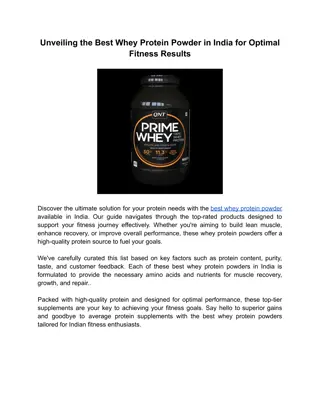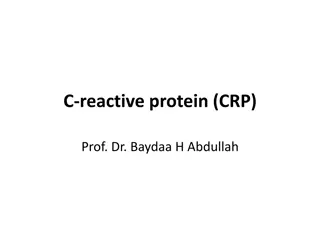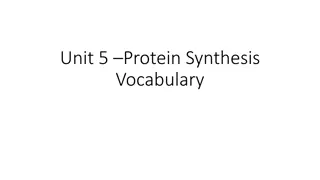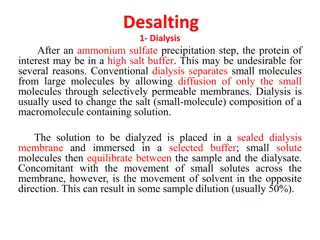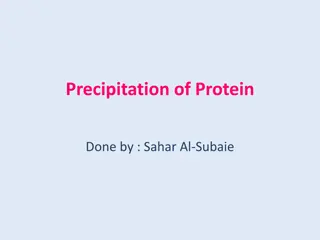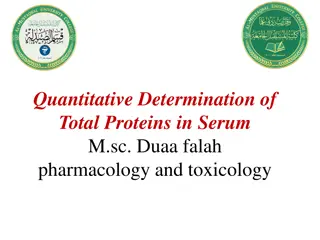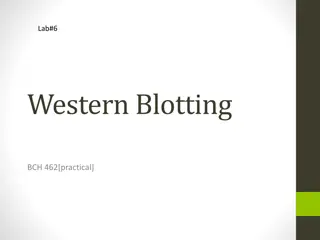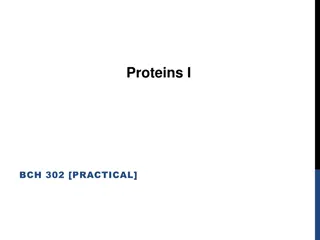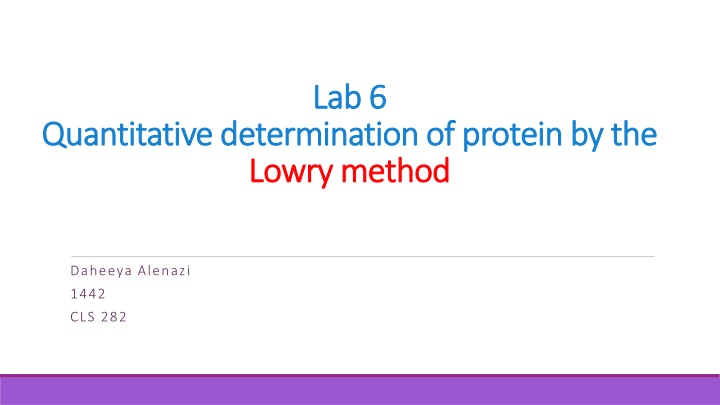
Quantitative Protein Determination Using Lowry Method: Analysis Protocol
Learn about the Lowry method for protein determination, its sensitivity compared to other methods, principles involving peptide bonds and color changes, assay objectives, and step-by-step procedure. Understand how to calculate protein concentration and create a standard curve for accurate measurements.
Download Presentation

Please find below an Image/Link to download the presentation.
The content on the website is provided AS IS for your information and personal use only. It may not be sold, licensed, or shared on other websites without obtaining consent from the author. If you encounter any issues during the download, it is possible that the publisher has removed the file from their server.
You are allowed to download the files provided on this website for personal or commercial use, subject to the condition that they are used lawfully. All files are the property of their respective owners.
The content on the website is provided AS IS for your information and personal use only. It may not be sold, licensed, or shared on other websites without obtaining consent from the author.
E N D
Presentation Transcript
Lab 6 Lab 6 Quantitative determination of protein by the Quantitative determination of protein by the Lowry method Lowry method Daheeya Alenazi 1442 CLS 282
Methods of protein determination: Methods of protein determination: There are many methods, and the common methods are: 1) Kjeldahl method ( for total nitrogen) 2) Biuret assay ( using known protein to establish a standard curve) 3) Lowry assay ( based on the presence of tyrosine and tryptophan in a protein) ** Lowry is more sensitive than biuret method). ** The method was first proposed by Lowry in 1951.
Principle (2 steps) A)reaction of peptide bonds of the protein with cupric copper under alkaline conditions and CU+2 + peptide bonds Alkaline PH reactivity of the peptide nitrogen[s] with the copper [II] ions ( pink-violet colored complex ) B)reduction of phosphomolybdic acid by tyrosine and tryptophan (aromatic aminoacids) residues of the protein Blue color because of folins reagent(heteropolymolybdenum) The color shows a maximum absorption at 720 nm.
Assay sensitivity and objective: 1. To determine the concentration of the protein.(0.01-2mg/ml) 2. To construct standard graph on paper by using several dilutions.
Blank Std1 Std2 Std3 Std4 Std5 Unknown sample Procedure:C1-0.2 mg/ml,V2-1,C2-? Concentration of standard protein (mg/ml) - ? ? ? ? ? - Volume of protein standard (ml)(V1) - 0.2 0.4 0.6 0.8 1 Volume of unknown (ml) - - - - - - 1 Distilled water (ml) 1 0.8 0.6 0.4 0.2 - - Alkaline solution (ml) CuSO4 5 5 5 5 5 5 5 Mix and incubate at 37oC for 10 minutes. Folins Reagent (ml) heteropolymolybdenum Blue 0.5 0.5 0.5 0.5 0.5 0.5 0.5 Mix and incubate at 37oC for 30 minutes and Read absorbance of standards and unknown at wavelength 720nm against the blank using the spectrophotometer.
Calculating concentration of standard Use formula C1V1=C2V2 C1=0.2mg/ml V1=Volume of protein standard V2=1ml C2=? *Make Standard Curve.






